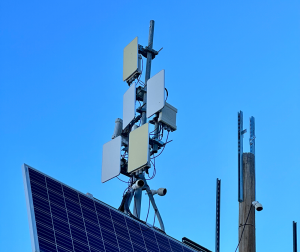
5G not only promises faster access to the Internet for mobile users but also other benefits for businesses. For example, factory automation, robotic delivery systems, and communications with agricultural devices such as smart tractors could use private 5G wireless networks.
Achieving the highest possible speeds requires the wide bandwidths available at extremely high frequencies (EHF). The range of these millimetre wavelength (mmWave) signals is limited. But mmWave operation is ideal for mobile services in areas with high populations densities and for localised private networks in, for example, factories.
Ofcom, the telecoms regulator in the UK, has recently announced their plans for the allocation of bandwidth at 26 GHz and 40 GHz for 5G provision in both high density and low density areas.
Licence provision is complicated by the need to avoid interference with existing applications using EHF including microwave point to point connections. However, licences in the UK for 26 GHz fixed link services in and around high-density areas will be withdrawn in the next five years.
Two types of 5G licence will be available: 15 year term licences for city and town wide provision of 5G mobile services will be auctioned while licences for more localised services in both high and low density areas will be offered on a first come, first served basis at a fixed fee. There is a limit on the number of transmitters and power constraints for localised services especially in or near high density areas.
Regulators in the UK, Germany, Sweden, the Netherlands, and Switzerland are also issuing or planning to issue licences for localised, private services at lower frequency bands such as 3.7 GHz.
You can learn more about 5G services and operation by studying PTT online courses such as Introduction to mobile systems, 4G and 5G radio access networks, and Advanced mobile systems.
Or, for a complete picture, why not take advantage of our special offer to celebrate PTT’s 30 years of learning provision and study all of the PTT courses covering mobile communications.